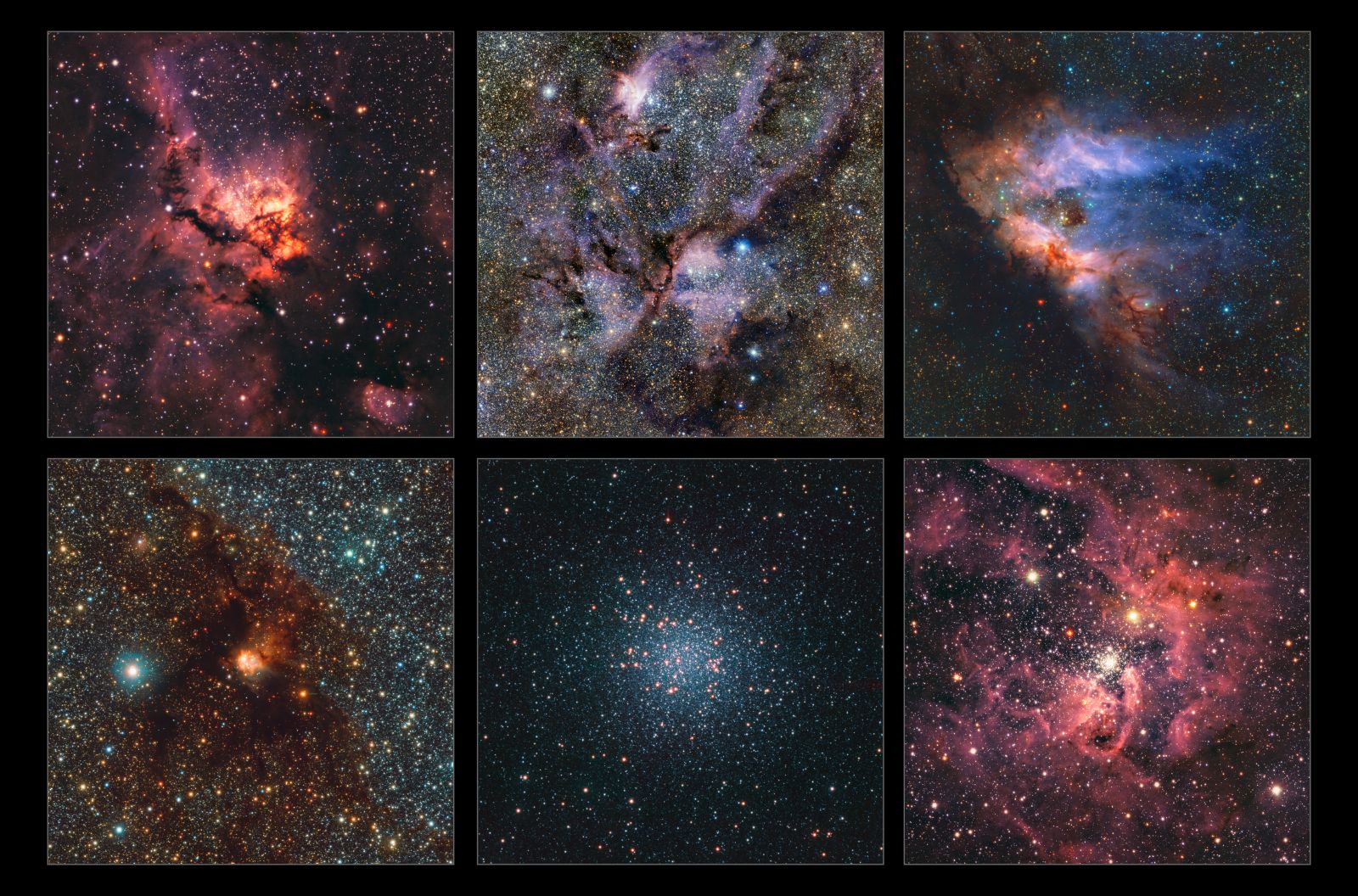Follow us on Google News (click on ☆)

"We have made so many discoveries that we've changed how we view our galaxy forever," says Dante Minniti, astrophysicist at Andrés Bello University in Chile, who led the entire project. This record-breaking map includes 200,000 images taken by the VISTA (Visible and Infrared Survey Telescope for Astronomy) telescope at ESO.
Located at ESO's Paranal Observatory in Chile, this telescope's main mission is to map vast areas of the sky. The team used VISTA's VIRCAM infrared camera, which can peer through the dust and gas permeating our galaxy. Therefore, it is capable of seeing the radiation from the most hidden regions of the Milky Way, opening up a unique window into our galactic environment.
This gigantic dataset (1) covers an area of the sky equivalent to 8,600 full moons and contains about 10 times more objects than a previous map published by the same team in 2012. It includes newborn stars, often buried in dusty cocoons, and globular clusters—dense groups of millions of stars among the oldest in the Milky Way.
By observing in infrared light, VISTA can also detect very cool objects that glow at these wavelengths, such as brown dwarfs (failed stars without sustained nuclear fusion) or rogue planets not orbiting a star.
Observations began in 2010 and concluded in the first half of 2023, totaling 420 nights. By observing each patch of sky multiple times, the team was able not only to pinpoint the location of these objects but also track their movements and changes in brightness.
They cataloged stars whose brightness changes periodically and can be used as cosmic rulers to measure distances (2). This allowed researchers to obtain a precise 3D view of the inner regions of the Milky Way, which were previously hidden by dust. The researchers also tracked hypervelocity stars—fast-moving stars ejected from the central region of the Milky Way after a close encounter with the supermassive black hole located there.
The new map contains data collected as part of the VISTA Variables in the Vía Láctea (VVV) survey (3) and its complementary project, the VVV eXtended (VVVX) survey. "This project was a monumental effort, made possible because we were surrounded by a fantastic team," says Roberto Saito, astrophysicist at the Federal University of Santa Catarina in Brazil and lead author of the paper published today in *Astronomy & Astrophysics* on the project's completion.
The VVV and VVVX surveys have already resulted in more than 300 scientific papers. While the surveys are now complete, the scientific exploration of the collected data will continue for decades to come. Meanwhile, ESO's Paranal Observatory is preparing for the future: VISTA will be upgraded with its new 4MOST instrument, and ESO's Very Large Telescope (VLT) will receive its MOONS instrument. Together, they will provide the spectra of millions of objects studied here, and countless discoveries are expected.
Notes:
(1) The dataset is too large to be published as a single image, but the processed data and object catalog are available on the ESO science portal.
(2) One way to measure the distance to a star is to compare its brightness as seen from Earth to its intrinsic brightness, but the latter is often unknown. Certain types of stars periodically change in brightness, and there is a close relationship between how quickly they change brightness and their intrinsic brightness. By measuring these fluctuations, astronomers can determine the brightness of these stars and thus their distance.
(3) Vía Láctea is the Latin name for the Milky Way.